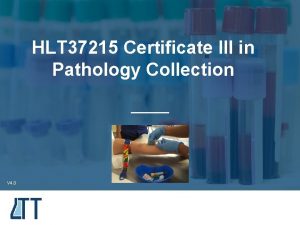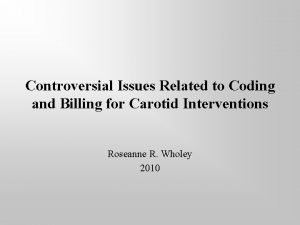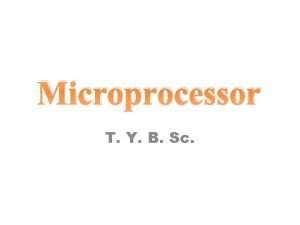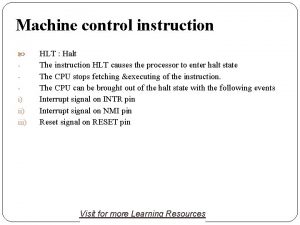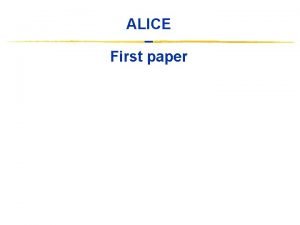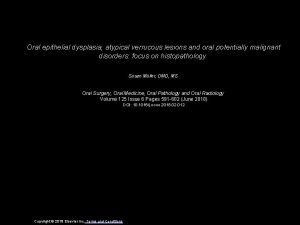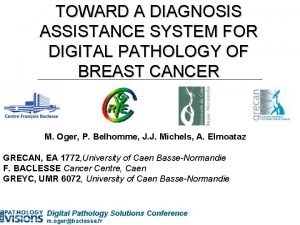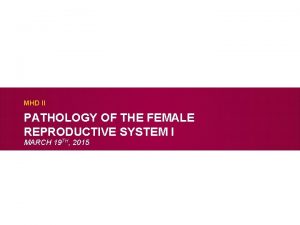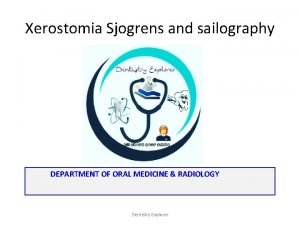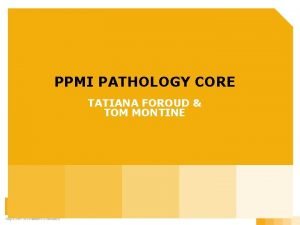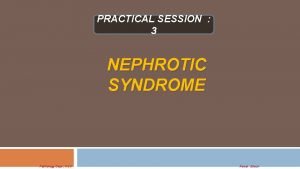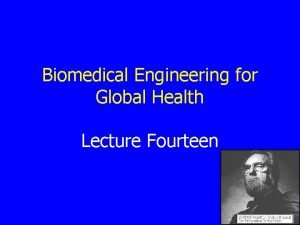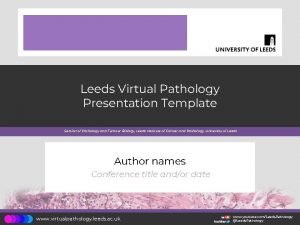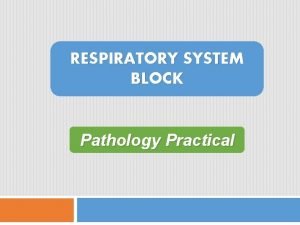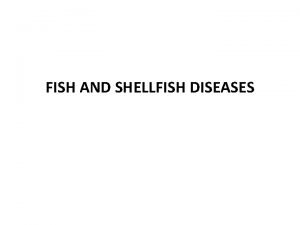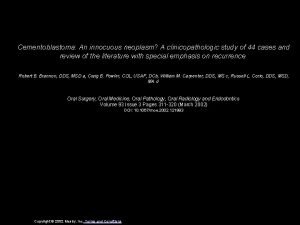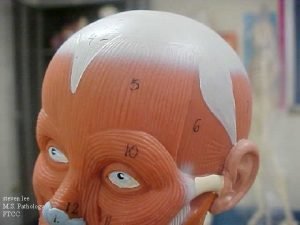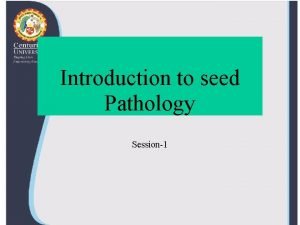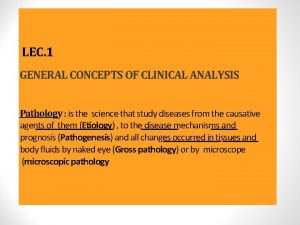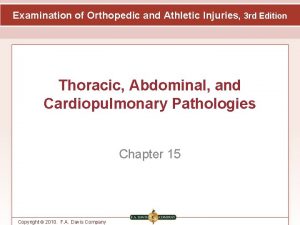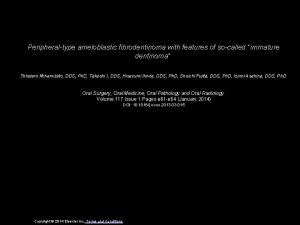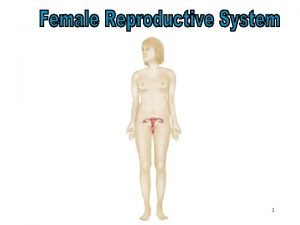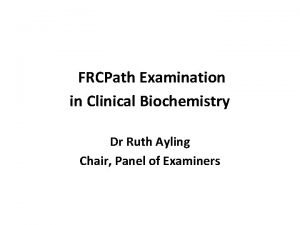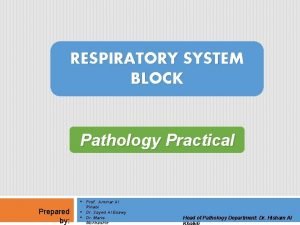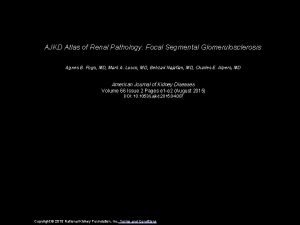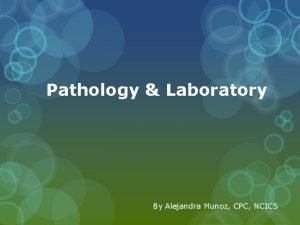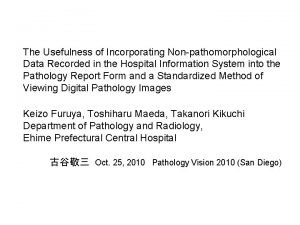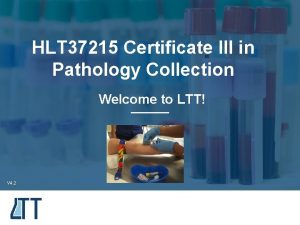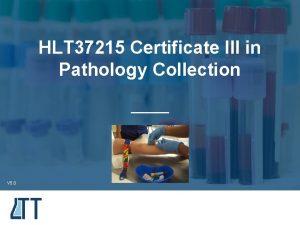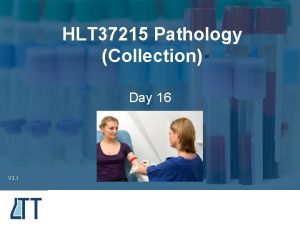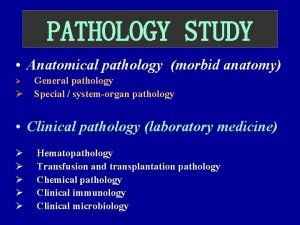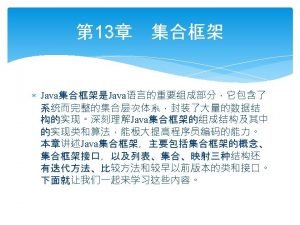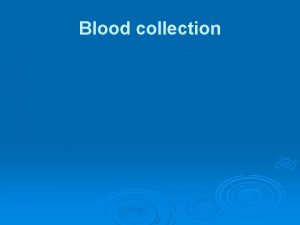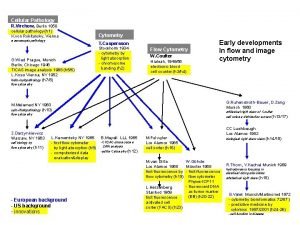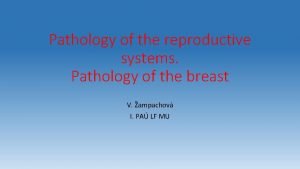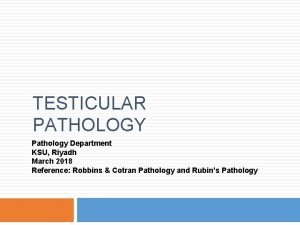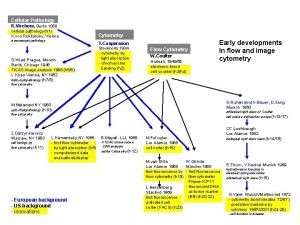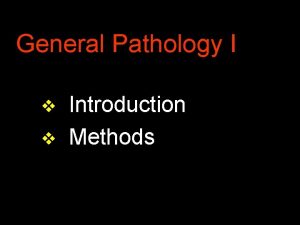HLT 37215 Certificate III in Pathology Collection v







































- Slides: 39

HLT 37215 Certificate III in Pathology Collection v 2. 0 1

Units of Competency • HLTPAT 004 Collect pathology specimens other than blood • HLTPAT 002 Perform venous blood collections • HLTPAT 001 Identify and respond to clinical risks in pathology collection 2

HLTPAT 004 Collect pathology specimens other than blood • Confirm collection requirements • Prepare for collection procedure • Collect specimen • Follow post collection procedures 3

Session Outcomes • Principles of specimen collection HLTPAT 004 • Types of specimens - HLTPAT 004 • Labelling and specimen storage requirements - HLTPAT 004 • Practice bleeds – HLTPAT 002 • Practical Assessment - HLTPAT 001 4

Legal and Ethical Requirements • Duty of care • Confidentiality of information • Work role boundaries • Workplace health and safety • Immunisation • Informed consent 5

Greet and ID the Client • • Friendly greeting Introduce yourself Ask the client’s name Request the Medicare card and referral form • Check the client details are correct • Place a tick against the client’s details 6

Read the Referral Form • What tests are ordered by the doctor? • Any there any pre-test requirements? 7

Pathology Collection Manuals Collection manuals give you information about what to collect, how much to collect, and what type of collection container or tube to use. 8

Confirm Client Meets Pre-testing Criteria • Fasting prior to helicobacter breath test • Changing or stopping medications • Abstaining from sexual activity before semen collection • Avoid skin lotions before skin scrapings 9

Principles for Specimen Collection Explain the procedure to the client Ensure the client is sitting comfortably for procedures Observe the client throughout the procedure The specimen must be collected from the correct site with minimum contamination The specimen must be collected at an appropriate time Enough specimen must be collected The correct collection device and specimen containers must be used Specimens must be properly labelled and sealed The details on the specimen and request form should match Specimens should be promptly transported or stored appropriately 10

Infection Guidelines and Precautions • Follow hand hygiene practices before and after collecting specimens and between clients • Use PPE such as gloves and eye protection when taking mouth or throat swabs • Practise respiratory hygiene and cough etiquette at all times • Follow environmental cleaning practices as per organisational guidelines • Handle, transport and process linen appropriately • Dispose of contaminated waste appropriately • Handle and clean client equipment appropriately • Identify infection hazards, assess risks, and identify and implement control measures • Take additional precautions when known infections (spread by contact, droplet or through the air) are present or potentially present. 11

Types of Specimens There are many types of specimens you are expected to collect. The following slides cover the main types. 12

Urine • Urine is a very good, relatively non-invasive, diagnostic tool • Types of urine samples: – 24 Hour urine (24 HU) – Mid-stream urine (MSU) – Early Morning Urine (EMU) – First Void Urine (FVU) – Terminal urine – Paediatric urine 13

Swabs The types of swabs used differ for what is to be tested. Examples include: • Viral swabs – dry • Bacterial swabs – gel – Wound swabs – Throat swabs – Eye swabs – Ear swabs – Nasopharyngeal swab 14

Faeces Common faeces requests: • Faeces microscopy • Faecal ova, cysts and parasites • Faeces viral testing • Faecal occult blood • Faecal reducing substances / lactose intolerance 15

Semen • Fertility investigation • Post vasectomy fertility investigation • Infection 16

Sputum • Investigate respiratory tract infections and malignancies • Thick in consistency, opaque and varies in colour from white to yellow to green • Additional precautions are necessary 17

Skin Scrapings Skin, hair and nails are commonly collected for dermatophyte fungi testing/mycology testing. 18

Break 19

Helicobacter Breath Test • Pylori is a type of bacteria that has been linked to Peptic Ulcer disease. This bacterium lives in the lining of the stomach and can break down Urea • This breath testing is performed only at collection centres 20

Biopsies These specimens are collected by Medical staff and when received at the collection centre. You should: • ensure the specimen is placed in Formalin and stored in a fridge • place it in a well-sealed, leak proof, biohazard specimen bag containing enough absorbent material for the volume of formalin present 21

DNA Paternity Testing • DNA paternity testing is conducted by taking mouth swabs • When taking swabs for DNA, gloves should be worn to avoid environmental DNA contamination and cross infection 22

Oral Saliva Screening • Spitting method • Swab • Oral sponges 23

Labelling Specimens • You must ensure the details on the label of the samples are correct and legible. • Confirm the details or label the collection tubes/ containers in front of the client and ask the client to confirm their details. 24

Specimen Storage & Transportation Labelling • • • Storage • Leak resistant biohazard bag • Accompanied by request form • Store in appropriate temperature as per procedure Transportation Client details DOB Data and time of collection Site of collection Bar code • Transport under appropriate temperature and other conditions • Timing requirements must be met 25

Waste Disposal Domestic Bin Cytotoxic bin Clinical/Biohazard bin Confidential bin Sharps bin 26

Coronavirus Disease (COVID-19) • COVID-19 is a new illness that can affect your lungs and airways. It's caused by a virus called coronavirus. • Self-isolation and quarantine guidelines are to be followed at all times. 27

Guidance on Laboratory Testing • https: //www. health. gov. au/sites/default/files/documents/2020/02/phln -guidance-on-laboratory-testing-for-sars-cov-2 -the-virus-that-causescovid-19. pdf 28

Where to get Information For the latest advice, information and resources go to www. health. gov. au • Call the National Coronavirus Health Information Line on 1800 020 080. • The line operates 24 hours a day, seven days a week. 29

Activities Collection procedures, demonstrations and explanations 30

Worksheet Activity 31

Lunch 32

Practice Bleeds 33

Practice Bleeds & Assessment HLTPAT 001 34

Afternoon break 35

Practice Bleeds & Assessment HLTPAT 001 36

Recap 37

Any Questions? 38

Document Revision Version Number Details of the Revision Date Created/Approved v 1. 0 New Issue for new program 2020 23/03/2020 KR / JS v 2. 0 New issue for version 2. 0 HLT program 22/10/2020 KR / JS 39
 Cert 3 in pathology collection
Cert 3 in pathology collection Cpt code 37215
Cpt code 37215 Hlt addressing mode
Hlt addressing mode Hlt instruction
Hlt instruction Hlt paper size
Hlt paper size Inverse relations and functions
Inverse relations and functions Hamlet act iii scene ii
Hamlet act iii scene ii Landsat collection 1 vs collection 2
Landsat collection 1 vs collection 2 Sightd
Sightd Oral pathology
Oral pathology Digital pathology
Digital pathology Pathology
Pathology Behavioral pathology
Behavioral pathology Female reproductive system pathology
Female reproductive system pathology Cumulus clouds in oral pathology
Cumulus clouds in oral pathology Cherry blossom appearance in oral pathology
Cherry blossom appearance in oral pathology Core pathology
Core pathology Pathology of asthma
Pathology of asthma Pathology lectures for medical students
Pathology lectures for medical students Epithelial component
Epithelial component Prostate pathology
Prostate pathology Leeds virtual slides
Leeds virtual slides Pathology
Pathology Plant pathology impact factor
Plant pathology impact factor Types of necrosis
Types of necrosis Oral pathology
Oral pathology Bicep
Bicep Introduction and importance of seed pathology
Introduction and importance of seed pathology Pathology branches
Pathology branches Somatic death vs cellular death
Somatic death vs cellular death Female reproductive system pathology
Female reproductive system pathology Pathology outline
Pathology outline Oral pathology
Oral pathology Clinical pathology accreditation
Clinical pathology accreditation Abortion types
Abortion types Frcpath examination
Frcpath examination Bullous emphysema
Bullous emphysema Ajkd atlas of renal pathology
Ajkd atlas of renal pathology Cpc lab test
Cpc lab test Gross pathology
Gross pathology
